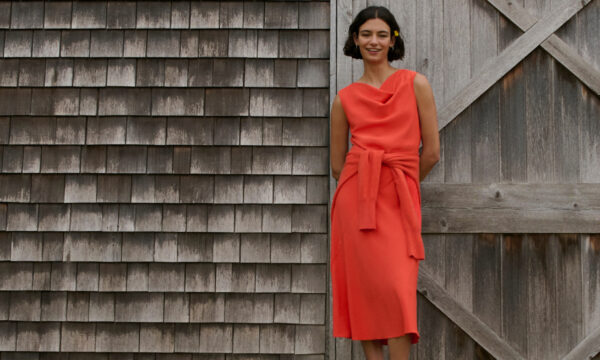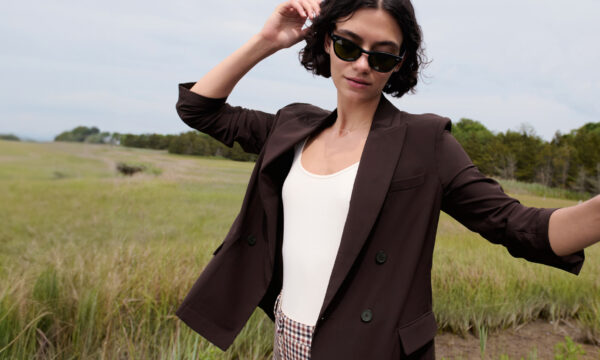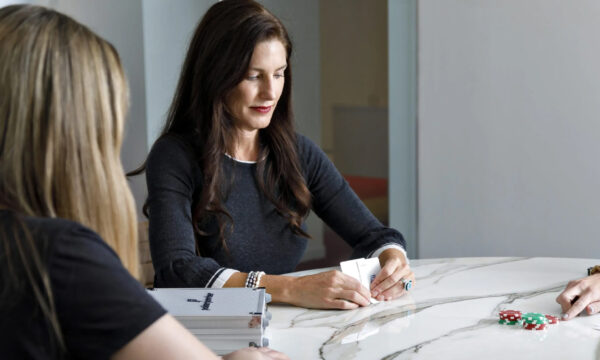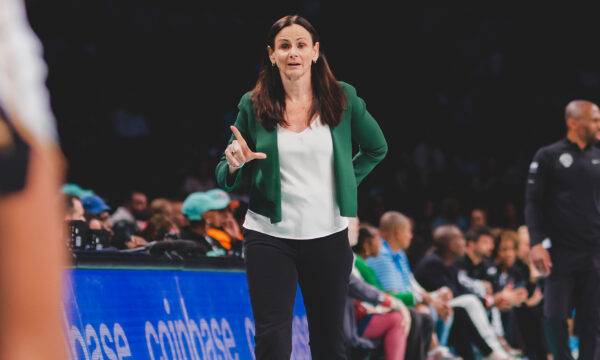
Shop This Look
Meet the Pivot Queen: How Hayet Rida Transforms Failure into Success
The designer and entrepreneur behind our latest capsule shares her approach to style, career, and more.
Hayet Rida has worn many hats throughout her career—although in her case, “worn many necklaces” would make for a more apt idiom. After working in advertising and tech and dabbling in everything from food blogging to candle-making, she founded her jewelry brand, KHOI, where she now serves as Creative Director. Hayet likes to call herself the “Pivot Queen,” referencing the big leaps and 180-degree turns she’s taken to get where she is now. “Give me a failure, and I will flip it into a success,” she says.
As a designer, Hayet sees fashion as a means of self-expression, but that doesn’t mean her style is overly complicated. Instead, she finds creativity in restraint and relies on a wardrobe of elevated, reliable, neutral styles that she can dress up or down with accessories. “I never want to look like I’m doing too much,” she explains. “Sometimes, there’s perfection in minimalism.”
I spoke with Hayet about her approach to wardrobe-building, why she embraces failure, how she leans into vulnerability as a creative and a leader, and so much more. Read our full conversation below.
Want more M Dash?
Sign up for our weekly newsletter.
Thank you!
Her Closet
You’ve shared that your journey into fashion started with you exploring your mother’s jewelry. How else did she help shape your personal style today?
My mom was a single mother with five kids, and she did everything—entrepreneurship, interior design, real estate—so as you can imagine, that meant she was out of the house a lot of the time. My bonding time with her was in the morning when she was getting ready for work, sitting next to her at her jewelry table.
She would always wear the most amazing outfits—I’d compare her style to Iris Apfel’s. You know how Iris stacks jewelry to the point where you’re like, “I could never do that, but I like how it looks on you”? That was my mom. She spoke about jewelry like it was artwork.
Growing up, my mom often told me, “Let people know you come from a good home. Even if you’re just going to the grocery store, you always represent yourself in how you look.” Recently, I FaceTimed her, and she was putting on mascara and jewelry, and I said, “Oh, you look nice. Where are you going?” She was like, “What do you mean? I’m going to watch TV.”
Right now, I’m sitting at home, talking to you on the phone in the middle of the storm. I’m not going anywhere, but I’m dressed up, and I have jewelry on. For me, it’s really about making myself feel good with the clothes I put on. A lot of women dress up for other people to see, but for me, it’s about feeling good in my skin.
How do you harness the power of costume in your life and work?
I see myself as a canvas, and every day, I think about the art I’m putting on—even if it’s just a T-shirt and black pants. That’s my form of expression. In terms of my style, I like to keep it chic and clean, and I never want to look like I’m doing too much. Sometimes, there’s perfection in minimalism.
My biggest pet peeve is going somewhere and then fidgeting with my outfit. When I feel good in my clothes, I look better, and my personality shines through.

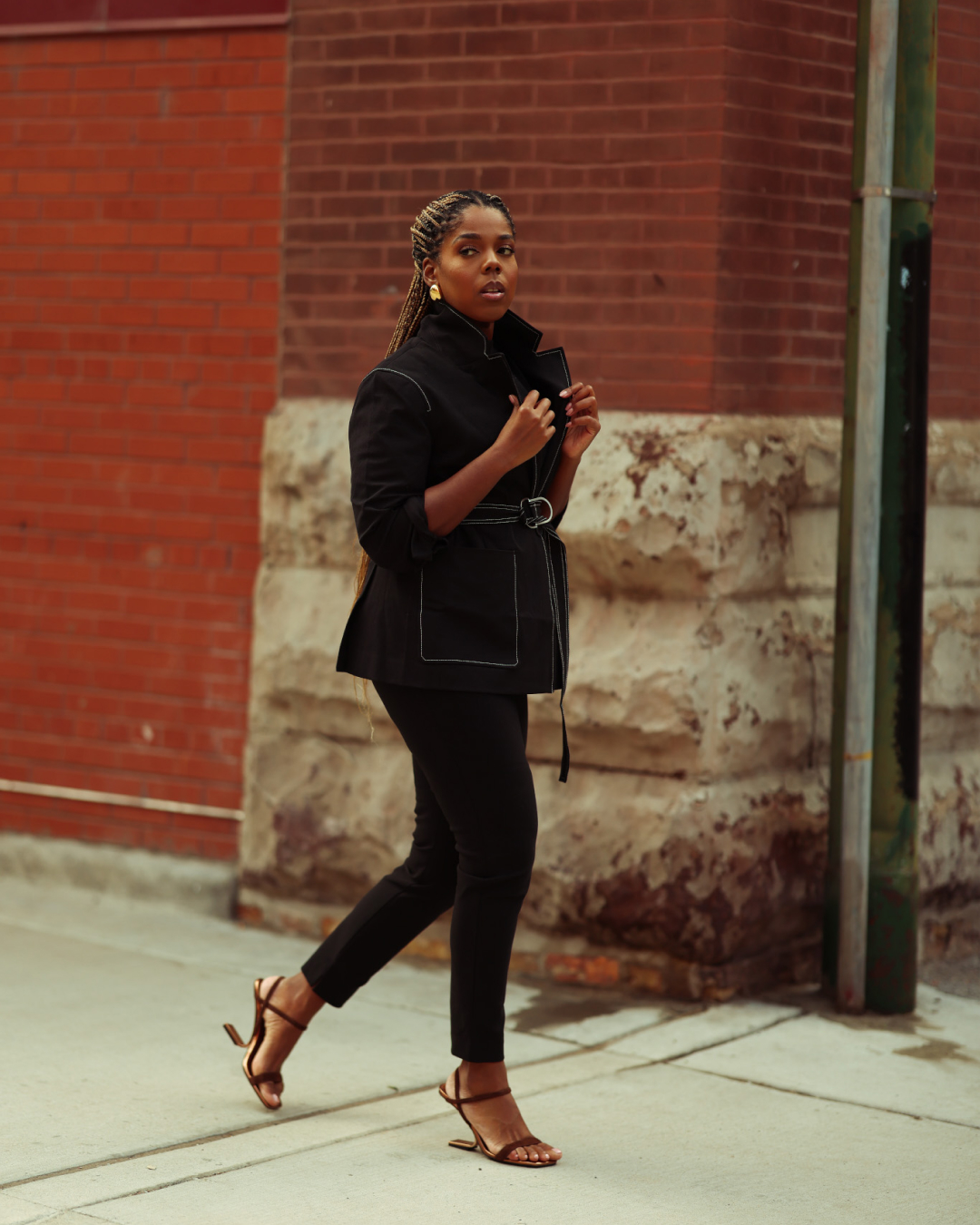
Do you have a go-to capsule wardrobe that you rely on in your everyday life?
Yes! I follow a very easy uniform, and I only wear three colors: black, white, and oat. I feel like those are the perfect elements to play with—I can mix black and white, I can wear black on black, or sometimes, I’ll do white and cream.
Wearing a very consistent color palette allows me to dress the same pieces up or down using accessories. I used to think you had to own 50 million pieces of clothing to look stylish. But actually, you just have to have the correct things, and you can make endless outfits.
You’ll get more out of your clothes if you start with elevated, quality pieces, and then build on them with accessories. My favorite thing to invest in is a great pair of pants, because they last me throughout every season.
What drew you to the pieces you selected for your M.M. capsule?
When I’m styling an outfit, I like to go from the bottom up—so I started with the pants. I’ll usually aim for black pants, and I like to have a variety of fits, so I went for a pair of skinny pants and a pair of culottes. For tops, I selected a black tee, a white tee, and the Antoinette top in alabaster, which is more elevated.
Where I really had fun was with the jackets: the Porter, the Moreland, and the Grenville. Once you have a solid inner layer—the pants and top—you can get creative with your jackets. Sometimes, I’ll wear the jacket, and other times, I’ll sling it over my shoulder.
One of the most exciting pieces was the Gwynne dress. It can be styled as a dress, but it can also be styled as a lightweight trench coat.
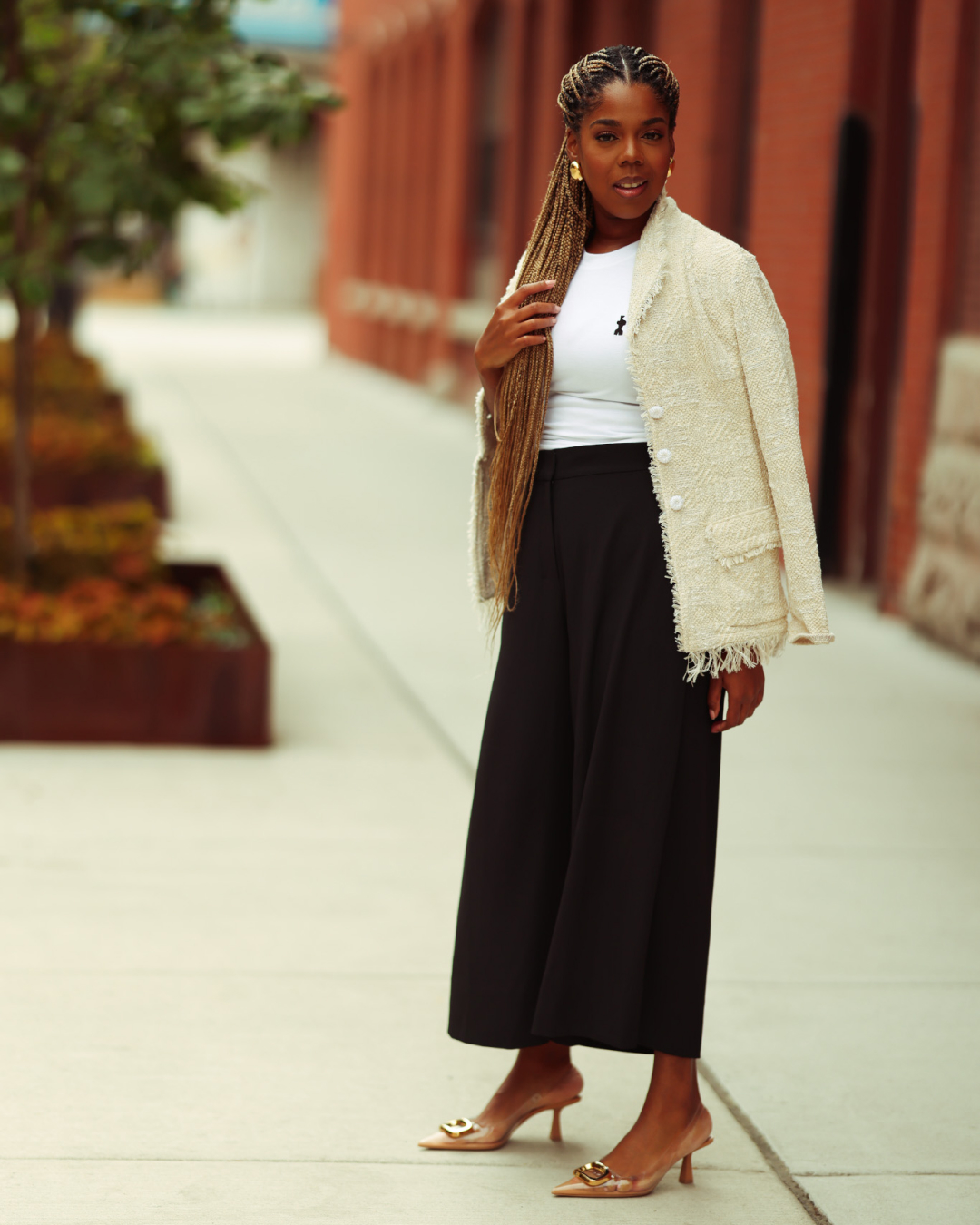
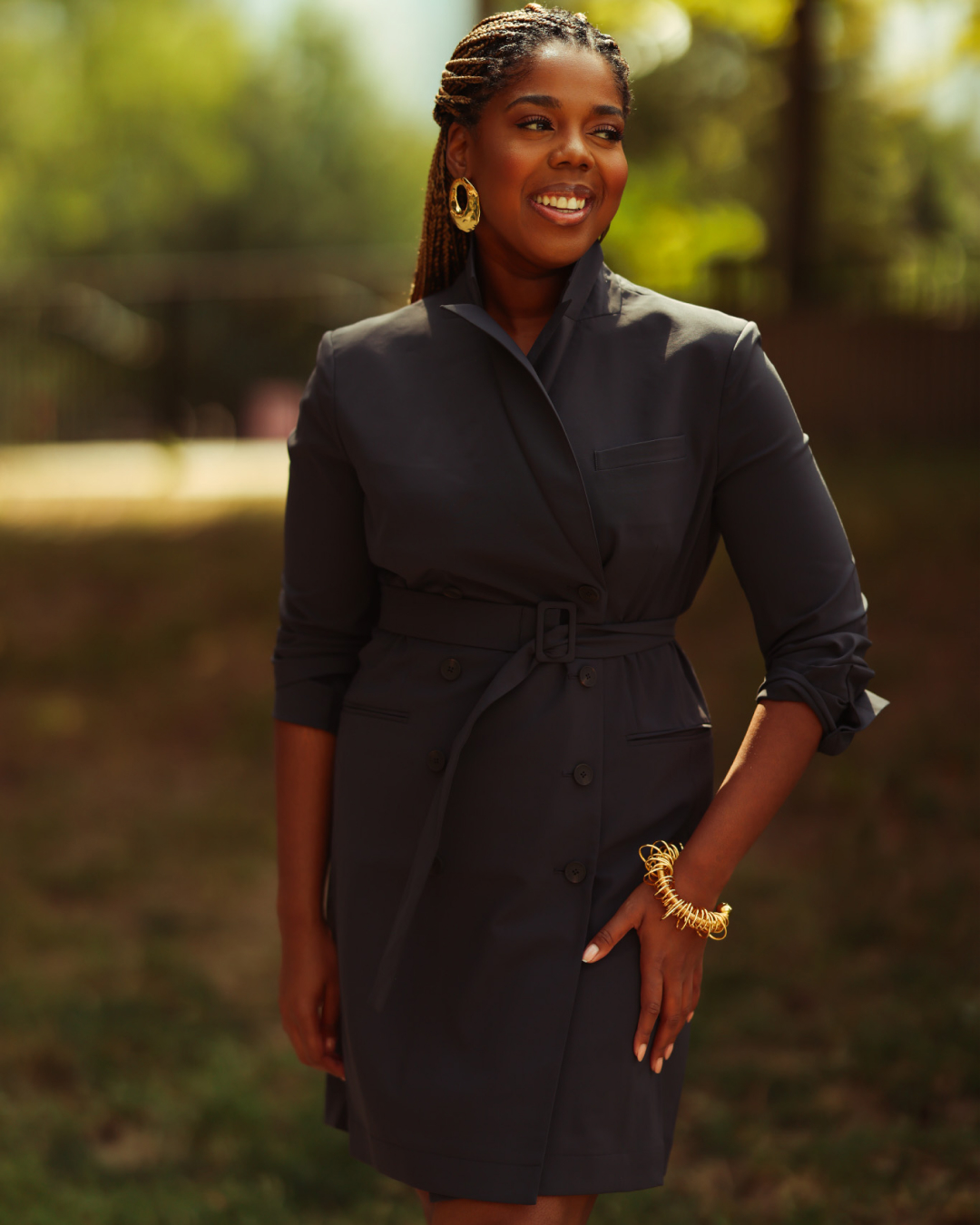
Her Career
Tell us about your career path. How did you get to where you are today?
My career began in advertising, where I stayed for 15 years before I transitioned to tech, working at Meta. I always had side hustles. It started with my blog, which turned into a food blog for a second, and then it was fitness, and then it was a candle company based on the smells I liked growing up. Anything that happens in my life, I can turn it into content.
At some point, I had a jewelry partnership with a brand, which didn’t go as planned, and they ended up pulling out. I had a ton of packaging, so I was like, “I guess I’ll just start my own brand.” That’s what led to KHOI, which is what I now do full-time.
I like to call myself the Pivot Queen. Give me a failure, and I will flip it into a success.
What advice would you give someone else who wants to turn a failure into a success?
The thing you have to do is rework your relationship with failure. I get excited when I fail. I don’t like when things are going my way. I can embrace failure because I have a deep trust in myself, and I know I will figure a way out of it.
When something bad happens, I tell myself, “You have five minutes to go and cry—and then let’s get right back to it. You’re smart, and you’re resourceful.”
I got laid off two days after I opened my store. I locked myself in the closet and cried, and then I was like, “Okay. Now this is the only job I have, so I’m going all in.” Somebody else would’ve said, “Oh my god, my world is over.” Yes, your world is over. Now try and un-over your world. I can be crying while I’m building, as long as I’m still moving forward.
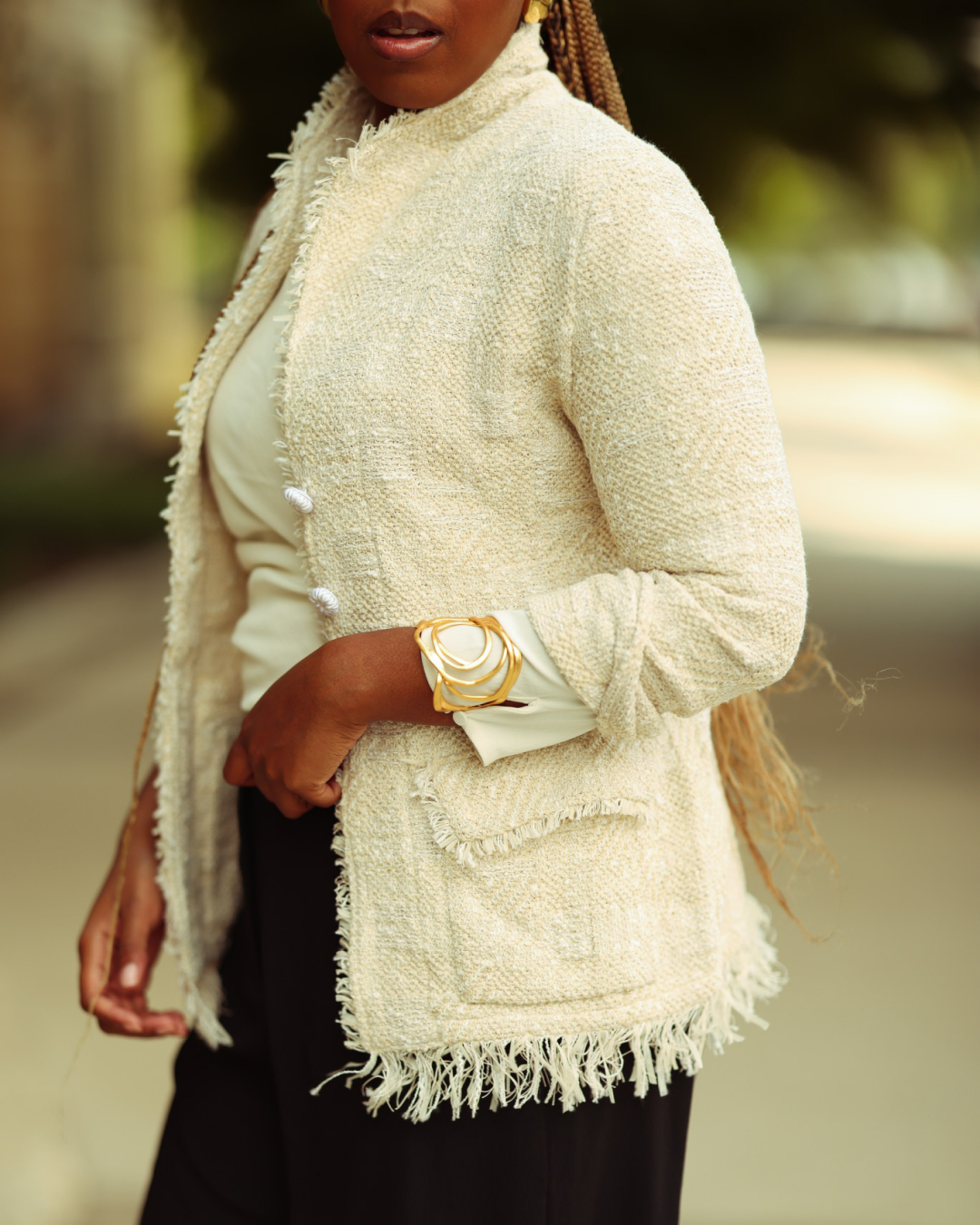

What’s the best thing about your job right now? What’s the hardest thing about it?
My favorite part about my job is that I approve my own PTO. Right now, I’m in Ghana, and I didn’t have to ask anybody’s permission. I just said, “I’m going home for two months, and I’ll create from there.”
My biggest asset and my biggest challenge is the fact that my mind and my creativity sustain my business. I have a team of almost 15 women, and they rely on me to keep creating magic so we can all be employed. That’s hard—but I flip it into excitement. I love that my creativity provides opportunities for so many women.
Sometimes, I feel like I’m so exhausted, I can’t design anything. During those times, I tell myself, “Then design from exhaustion.” One time, I was playing with the toggles on a necklace and feeling like I had no more ideas. So you know what I did? Designed an entire necklace made out of toggles.
I like to lean into that vulnerability. When I started my brand, I felt insecure that I wasn’t a good designer, so I designed a collection called “Masked Identity” about imposter syndrome. My advice to everybody is to find the things that make you scared, lean into them, and tell that authentic story. There’s magic in there. We can’t pretend like we have it all together.
You’ve shared that your company works with Ghanaian creative teams for all your marketing campaigns. Can you tell us more about that decision and what you’ve learned in the process?
My heart is always in Ghana—I lived here until I was 17. Often, when you’re from an African country, there is this mindset of, “I’m going to give back by donating money.” It has this savior mentality to it. My approach, instead, was to hire people that look like me. I’ve had the privilege of having a large platform that goes across the world, and I want people to see the talent in Ghana.
Logistically, it’s extremely hard, because I’m directing shoots via Zoom. You have to have a level of blind trust in your team and their creativity. The biggest lesson I’ve learned is to meet people where they are and to celebrate their strengths. I hire people based on the things they’re uniquely good at—I don’t hire them to make them into me. If I hire someone who’s good at over-the-top styling, I’m not going to tell them to tone it down, because if I wanted minimalist styling, then I should have hired somebody else.
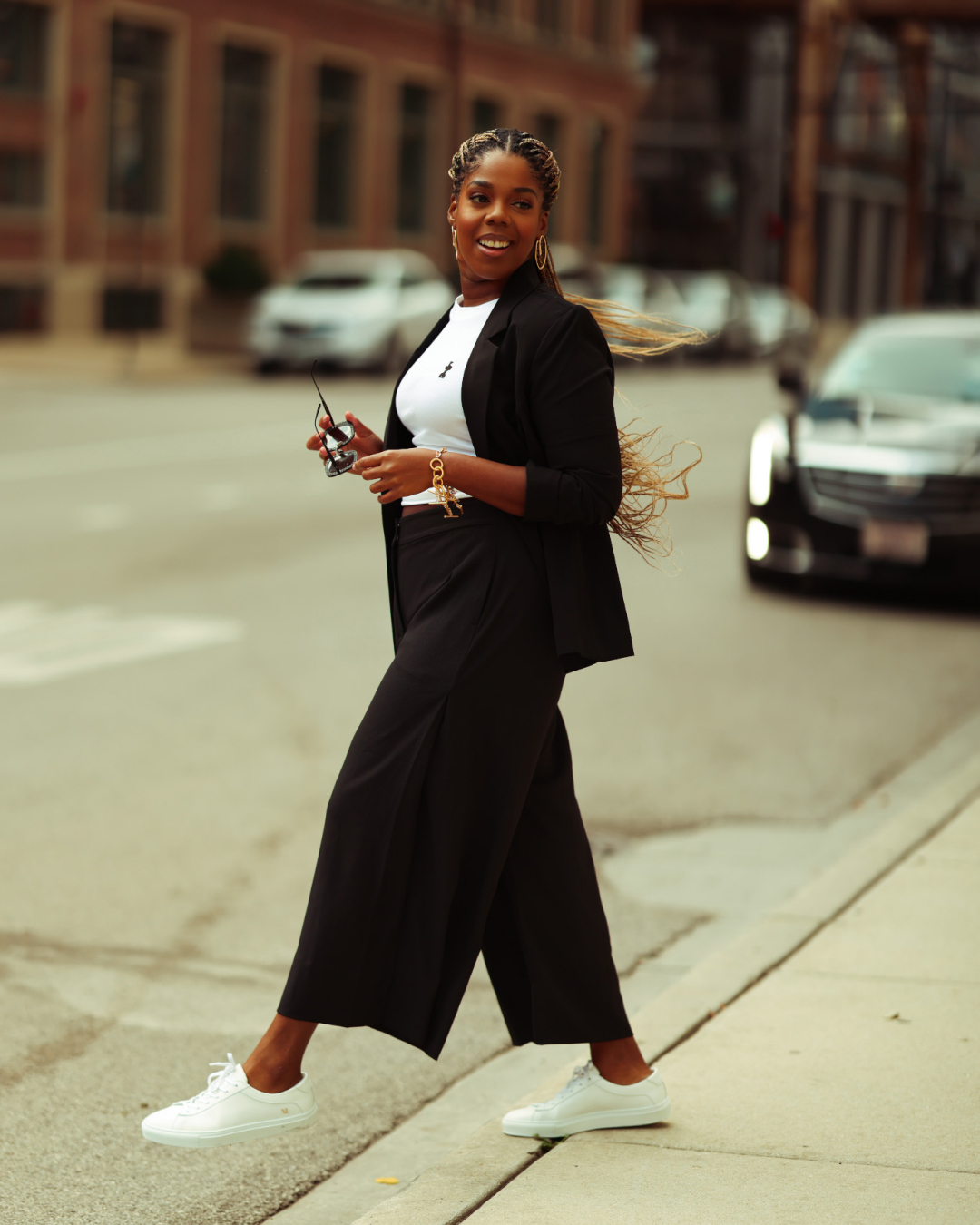
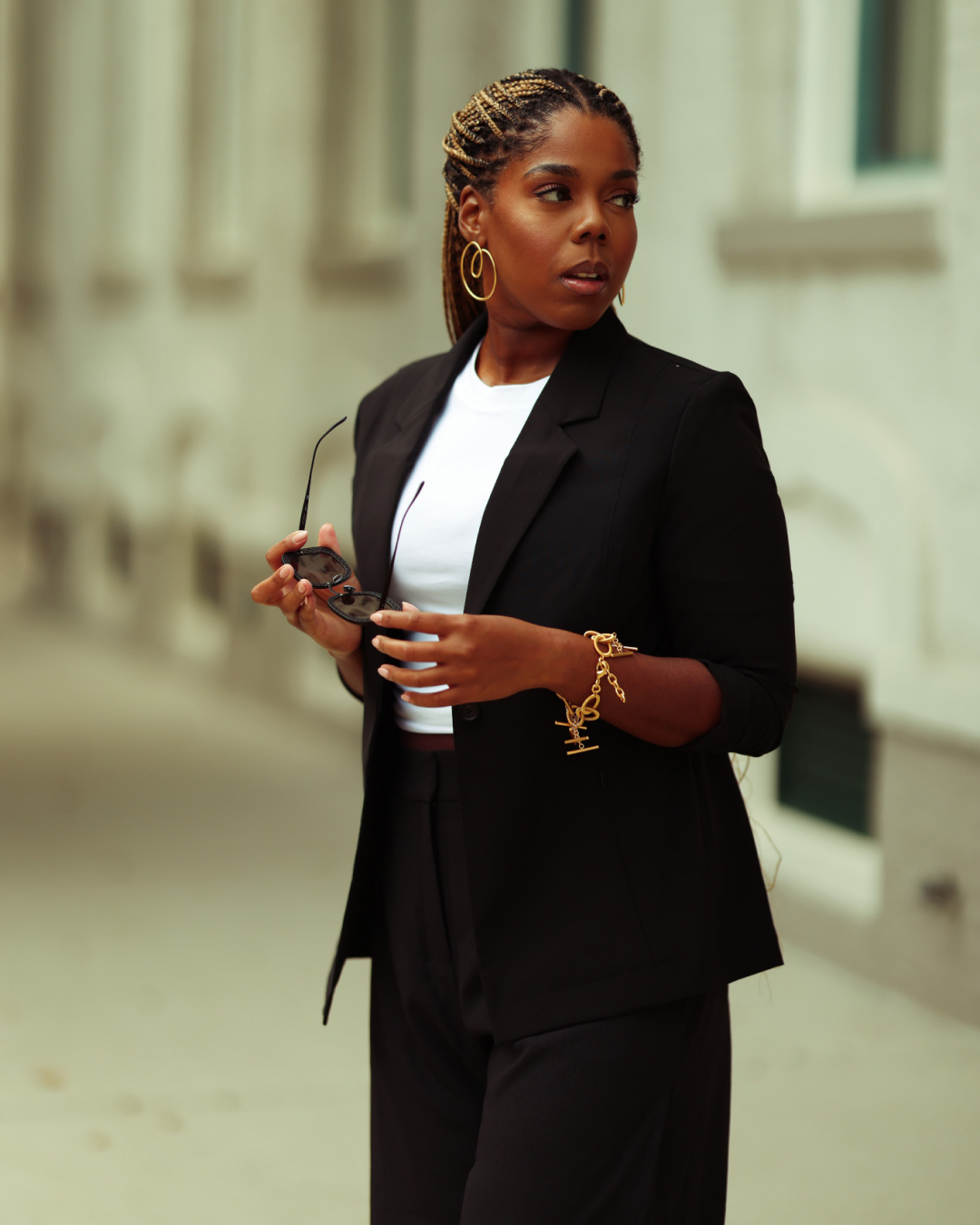
Her Brain
M.M.LaFleur was founded on the belief that when women succeed, the world is a better place. What does success look like to you right now?
Before, I would’ve defined success as being an award-winning strategist. But I achieved that, and I didn’t feel great. Then, I thought it was about getting my dream job. But I got my dream job on paper, and something was still missing.
Now, I see success as creative freedom. I’ve realized that at my core, I’m a creative person, and success, to me, is my ability to create exactly how I want to. This makes me a very difficult person to some people, but that is my joy and my art. When my pieces sell out, I don’t restock them, because as the artist, I want creative control over how many exist in the world. If I worked for a different company, imagine how I would have to explain that to a board of trustees or to a financial department.
The freedom to create how I want to, when I want to, and without answering to anybody—I don’t think it gets better than that.
If the you from 10 years ago could see where you are now, what do you think she would say?
She’d say, “Hell yeah.”
I’ve always been extremely stubborn. I never listened to adults, and I did everything my way. As a child, I was called rude, or a know-it-all, and as a result, I quieted that part of me. But now, I’m still that same person, and I’m able to be myself boldly. I’m just rediscovering my audacity to do whatever I want. My younger self would be like, “Finally. I knew you’d come back around.”
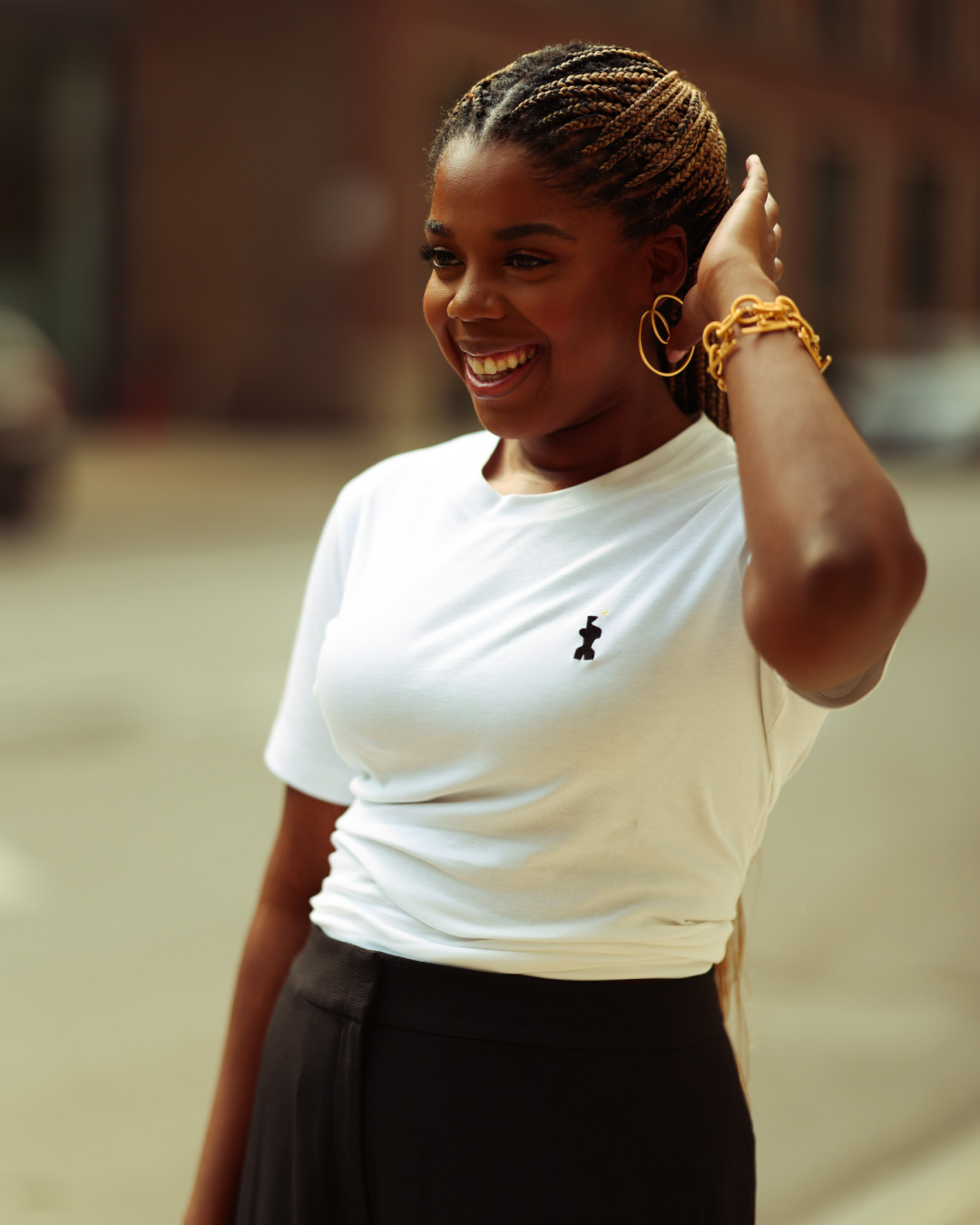

What’s one thing you hope your followers learn from your journey?
I think we grow up thinking that the outfits make us, and I want women to know that really, the outfits are just the backdrop. We shouldn’t rely on clothes to make us confident. We become confident by letting our real selves shine.
And there are no rules. If you want to wear only black, wear only black. If you want to wear only white, wear only white. This capsule collection is my way of saying, “I make my own rules, and this is my uniform.” I want it to inspire women, but I also want them to make it their own.





